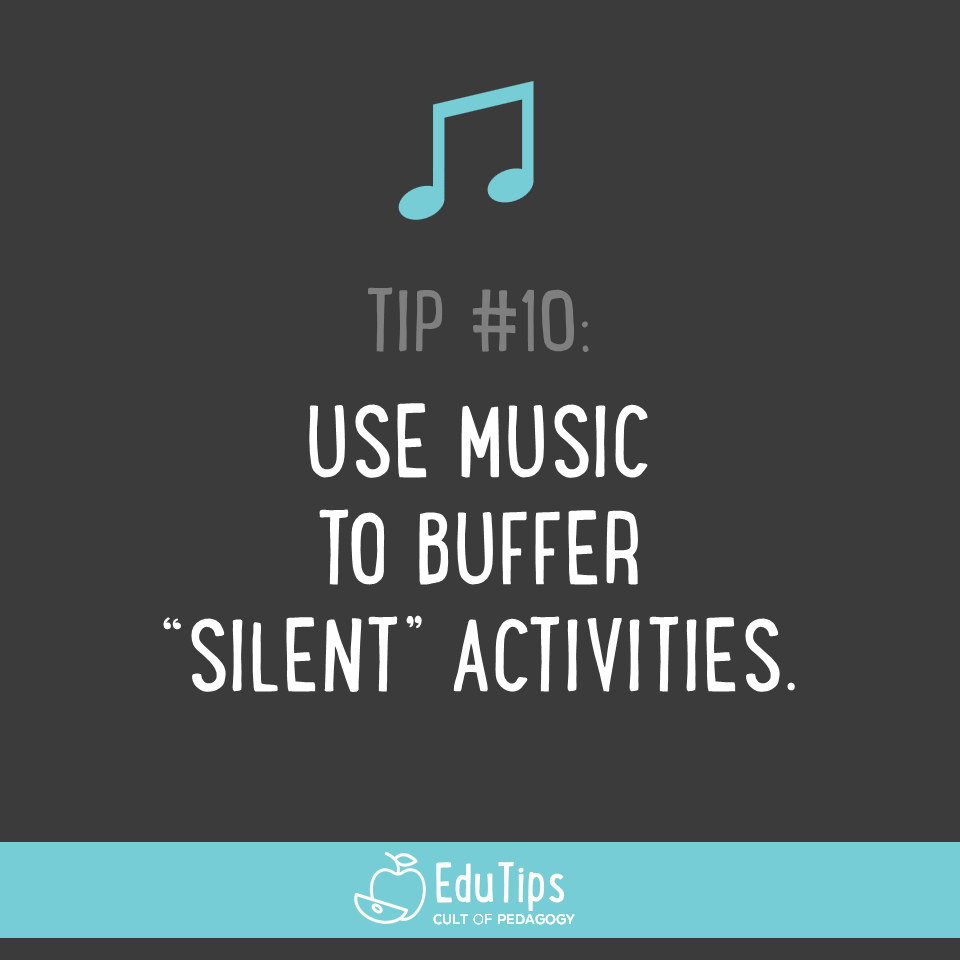Sponsored by Stash101.

As I sometimes do, I’m going to start this with a personal story. I apologize in advance if this is TMI. All of my middle and high school years took place in the 1980s, when we wore very high-waisted, very tight, non-stretchy jeans to school. A personal consequence of this trend was that after sitting still in desks for a few hours every school day, basically holding in farts, my digestive system would become very bloated and somewhat…noisy. This was not an issue in classes where we were doing some kind of lab, doing group work, or watching a video, but at those times when we had to read silently or take a test? UGH. The internal gymnastics I had to do to keep my intestines from calling attention to themselves! Let’s just say it was hard to focus on the learning in those situations.
What would have helped tremendously is just a little bit of background music. Some kind of classical or jazz or even new agey stuff—something that wouldn’t be a distraction but would provide just enough buffer noise to block out those little noises.
When we want our students to quietly focus on something like reading, writing, or test-taking, true silence is almost impossible to give them, because the typical classroom has all kinds of little noises that can break their concentration. We have the obvious bodily noises that not only distract but also embarrass students. Then there are the leg-bouncers and pencil-tappers, students who need a little bit of physical movement to stay focused. Noises float in from the hall and from out in the street. Devices ping and chirp. All of these sounds can distract students who are already struggling to maintain focus.
By adding a little bit of music in the background, at a low volume, you make all of those other sounds less noticeable, smoothing out the bumps in their auditory landscape and creating a sanctuary where sustained concentration is more likely to happen.
If you’re already doing this, or you like the idea and want to implement it, here are a few details to consider:
- It’s probably best to avoid music with lyrics. Yes, there are people who say they can concentrate just fine while listening to music with lyrics, but many others struggle to do meaningful, challenging work with words while other words are floating into their ears, especially if they are words to songs they know and love.
- Along those same lines, it may be most effective to choose music that is not popular with students right now. The music is meant to be background noise; you don’t want students singing along instead of focusing on their work. Also, if you did attempt to choose popular music, it’s not likely that every single student would like your selection, and then a debate would ensue over whether or not a particular song or artist is good. Instead, choose something that’s outside of the popular mainstream. Your students may all complain about it then, but at least you’re not showing preference for one popular genre over another; you’re just being a lame grown-up, which is often exactly what they need.
- Plan alternatives for students who are bothered by the addition of music. If you’re getting feedback from some students that the music is actually hampering their focus, earplugs or noise-canceling earmuffs may be an option for them.
See all EduTips here.

Hi,
I like your podcast!
Thinking of music in the classroom, thanks for adding the piece at the end. For those kids who can’t focus with any kind of music on (or their ability to focus is just sensitive to noise in general), not having having low noise options makes school even more difficult. Though I know most teachers will have a sense of how to support those students.
Ah, the 80s. I suppose any 80s music would qualify as not popular with students right now … ?
Gry
Gry, thanks for the positive response- Jenn will be happy to know that you’re a fan!
Hi there, I want to add an accessibility note here.
For students with auditory processing disorders and Deaf/HOH students, stop the music before you speak again. Trying to listen to a teacher over (even low) music can be inaccessible. I may even suggest a visual cue for when it’s time to pay attention to the teacher again.
Shan, thanks for the suggestion- that small detail can make a big difference!
Love this idea! As a musician, I personally find that even the most “dull” “classical” music can catch my focus. I will sometimes choose to use white noise instead of actual tunes. I really dislike the sound of a fan, but rain/thunderstorms work like a dream. It might be an appealing option for some students if they’re complaining about classical music.